Genre: Survival Horror Developer: Warp Inc. Publisher: Sega Ent. Players: 1 Released: 1996
Kenji Eno was quite infamous in the Japanese game development scene. His first title as an independent game designer, D, had become a minor hit when it arrived on the various disc-based consoles of its day, owing much to its success to its distinct audiovisual style and atmosphere. However, Eno apparently had a huge falling out with Sony over the PlayStation release of the game. As the story goes, Sony had only issued a very small print run of the game, leaving Eno hanging when he realized he was unable to meet demands. According to some sources, only a third or less of all PlayStation orders for the game could be fulfilled.
Eno took this personally. At the 1996 PlayStation expo he demonstrated his next game, Enemy Zero, to much interest and pre-release acclaim only to have the Sony PlayStation logo morph into the Sega Saturn symbol at the end of the demonstration, publicly switching allegiances at Sony’s own home event. This caused quite a stir in the Japanese gaming industry. Needless to say, Eno furthered his reputation as someone difficult to work with, and he burned quite a few bridges that way, not just with Sony. It also strongly married the fate of his company and his games to Sega’s console platforms, if only by necessity.
Still, after the surprise hit that was D, people were curious about Eno’s next offering. The scandal surrounding the demo for his next project only served to pique general interest in the game even more. And credit where it’s due: From a conceptual perspective, Enemy Zero is certainly the most interesting game in Warp’s entire repertoire, a very unique take on the then burgeoning survival horror genre, and capable of creating an eerie, unique atmosphere.
Too bad it’s such a chore to actually play, though.
The story and setting borrows liberally from Ridley Scott’s Sci Fi classic Alien. In an undetermined future, the spaceship Aki – an interstellar vessel shaped like a human heart – is homeward bound back to Earth when an emergency alert awakens our protagonist from cryosleep. Laura Lewis is listed as the ship’s pilot, yet due to the premature wakeup procedure, she suffers from partial memory loss and is thus disoriented. Trying to contact other crew members, she finds that the ship’s communication system is on the fritz. The only connection she gets is to the ship’s mechanic, but without working sound, she silently has to witness her colleague getting horribly mangled by an unseen attacker. As it turns out, an invisible alien life force has invaded the ship and is picking off its crew. Laura has to find out what happened, and sets out to find other survivors and to overcome the invisible threat. The alien presence on the spaceship is not the only thing the game lifts from the movie.
Once again, the heroine of a survival horror(ish) game made by Kenji Eno is a blonde American woman named Laura. Warp tried to push the concept of game characters as “virtual” actors, and nowhere is this more apparent than in Enemy Zero. Most of the protagonists share a similar model and first name with counterparts in 1999’s D2, although in character they are quite different. In a teaser video also included with the game, Kenji Eno describes Enemy Zero as a “more movie-oriented title,” with the space setting only serving as a stage, the characters as actors, and the whole concept of the game being one of “digital sadness.” I find it hard to take such heady, artistic claims seriously, especially given the technical limitations of the time but one thing is certain. With Enemy Zero, the developer was very interested in conveying a range of emotions to the audience, whereas in other video games of that decade characters usually just serve as props to advance the plot. Eno’s goal was to create protagonists with relatable emotions and comprehensible reactions to what is going on beyond just shock and disbelief followed by a call to action.
Enemy Zero comes on four CDs filled with rendered graphics and audio, both for an elaborate soundtrack and a fully voice-acted cast. It’s a huge game for the time, if not in length than at least in sheer data. Technically only three discs are needed to play and finish the game; Disc 0 just contains the intro, a teaser that was used to advertise the game, and a tutorial for badly explained combat mechanics… more on that later. Watching the teaser actually gives you a pretty wrong impression of what to expect. It insinuates a pulse-pounding, action-heavy thrill ride, scored with a hard techno soundtrack and fast, quick MTV-style cuts and edits. The finished game is anything but that. Enemy Zero is, in fact, a slow burn of a horror story that focuses on emotional tension rather than cheap thrills, with a very subdued soundtrack and combat that’s deliberately complicated and difficult, and thus best avoided.
Regarding atmosphere, this actually works in the game’s favor, at least to a degree. It’s obvious that a lot of love and detail went into crafting the rendered video clips and individual rooms of the Aki. The clips that play out in key moments or when Laura enters a new location don’t always serve to further the plot rather than to create a mood. It’s quiet and lonely in the spaceship, and there is a palpable sense of forlornness and discomfort. Eno, as is typical for him, also doesn’t shy away from confronting the player with the occasional, very gory aftermath of an alien encounter. The mood he’s going for is unsettling, and he’s certainly not afraid of the occasional shock horror – I was surprised to see a particularly disturbing scene from D2 first making an appearance in Enemy Zero, which might imply a certain fetish of Eno’s. He doesn’t resort to plain jump scares, though. It’s all very moody and, aside from being killed by an alien in a corridor, slow-moving. The game takes time to let it sink in when characters have revelations and make discoveries and what it does to their psyche, rather than just showing what’s immediately happening around them.
Old reviews of the game often seem to heap scorn at the quality of the rendered graphics for the rooms and videos. What’s worth mentioning though is that most of these reviews are targeted at the PC version of the game, which came out two to three years after the Saturn original. For a 1996 console game, the rendered graphics are actually quite impressive. Yes, the characters look and move more like Barbie dolls than actual human beings. But considering what was available during the fifth console generation, this still looks good, even in motion. This also goes for the pre-rendered rooms. The same can’t be said about traversing the ship however. The hallways and air vents of the Aki are murky, suffer from low resolution and heavy pixelation, and offer hardly any variety. And you are going to see those corridors a lot during the course of the game.
Audio plays a huge role in Enemy Zero. The soundscape is easily the best part of the entire game, and probably one of the best in the entire Saturn library! The game doesn’t bombard you with a loud and pompous soundtrack that is always dominantly present. Rather, most scenes play out somber and subdued, often hardly having any sound at all, and yet there’s always some sort of aural presence. The music in Enemy Zero hits a lot of low keys, underscoring a feeling of loneliness but also conveying emotions of loss, tragedy, betrayal, and on occasion also straight-up terror. The soundtrack was composed by Michael Nyman, a music veteran from the UK who has also scored a number of Hollywood productions critically acclaimed for their soundtracks, like The Piano. Eno worked very hard to get him involved in the games’ production, and it paid off: His work fits the mood of the space setting to a T.
Compared to the soundtrack, the voice acting is relatively weak. The English voices are stilted, have weird inflections and often sound too apathetic even when supposedly going through an emotionally tumultuous moment. There are also a number of inexplicable moments where characters go off on weird, seemingly inconsequential tangents, stuff like a person to show up and save you from danger, only to angrily state that they “don’t need to explain anything to you” and immediately walk off again. Also, the stiff acting makes otherwise interesting characters come across as boring and disinterested, which undermines their general purpose. Then again, stuff like that was common in the mid-’90s, and at least logic and voice acting are a tad more solid than in worse offenders, like e.g. in Resident Evil.
If it were only for setting, graphics and sound, Enemy Zero would be highly recommended. Actually playing the game is an entirely different matter, however, because the gameplay is awful. Whenever you’re in control, the game utilizes a first-person perspective throughout. Laura can explore pre-rendered rooms in a similar fashion to Warp’s previous title, D. However, most of the times this boils down to two things: Either you hunt for some sort of key card or password that grants you access to other rooms, or you need to use the computer consoles. Those show the same slooooooow startup sequence every time you switch menus, and afterwards you can’t do much. You can try calling other crew members, which fails most of the time but needs to be done to advance the plot. Occasionally you can read data files once you get more access. And sometimes, you even need to find a key before you get to use the computer or call a specific person – fun! There are only a few sequences you may call an actual puzzle. Moving around with a D-pad is generally slow and cumbersome. At least there’s support for the Saturn 3D control pad, so you can use the Analog stick for more precise controls. That still makes navigating the corridors a bore, since virtually all hallways and air vents in this spaceship look the same. Also, you hardly ever get an idea of where you need to go next, so it’s very easy to get lost, which is certainly not a good thing when ravenous invisible aliens are on the loose. One direct encounter with the unseen critters can and will prove fatal for Laura.
The only way to defend yourself against the aliens is through audio cues, which is an interesting idea at least. Laura carries an earpiece that gives off pings if an enemy is in the vicinity. Slow, low-pitched sounds indicate that an alien is in the general vicinity, but there’s no immediate danger yet – the enemy might just be around the corner in another corridor. The faster and higher the pitch, the closer the enemies get. At first, your only course of action is to try and actively avoid the opponents. Later on you get access to an energy weapon, but this is tricky to use. You need to charge it by holding down the A button before you can fire a shot; press it for too long, and the gun overcharges and fails. Every single shot you take is a tense, nerve-wracking experience. Weapons also need to be recharged at respective stations after every other shot. So it’s in your best interest to try and avoid any fighting, although there are a few spots where you can’t avoid resorting to your gun. If you miss, you’re as good as dead.
Which leads us to the worst aspect of the entire game: The save system. Laura carries a voice recorder with her – ironically, since you never actually hear her utter a single word right until the very end – which holds a number of charges that can’t be regained during the entire game. Saving can only be done in one of the pre-rendered rooms of the Aki, which are safe from alien attacks, not in corridors. On easy, the recorder holds 99 charges, on normal and hard 64, and saving a game uses three energy units. So you would think you’d have 33 or 21 saves available… if not for the fact that LOADING A SAVE STATE also uses up a single charge on your recorder! So if you run into a tricky situation where you die several times over, you run the risk that after multiple reloads you may run out of power to save the game later on. This has to be one of the dumbest, most irksome game saving mechanisms ever conceived. Yes, having limited resources for saving games is a staple of survival horror – the early Resident Evil games and their limited ink ribbons for typewriters come to mind. But the latter at least gave you an inkling (ha!) when it would be an opportune moment to save and didn’t prevent progress if you were forced to load several times because you were stuck at a particularly deadly section! Thankfully, Enemy Zero isn’t a long game and can be completed in three or four hours once you get a hang of the spaceship’s layout. So you should have more than enough charges to make it through – if you know what you’re doing. Considering that it takes a while to get used to navigating the confusingly identical corridors of the Aki, that might take longer than most gamers will probably muster up the patience for.
There’s a reason why Resident Evil and games of its ilk are considered classics of the horror genre while Enemy Zero remains in relative obscurity. The former managed to combine a mysterious setting and horror elements with engaging gameplay that, at the time, helped introduce video games to the newfangled third dimension. Enemy Zero certainly delivers on the first two aspects but utterly fails on the latter. The setting is interesting, the atmosphere dense and moody, and the soundscape simply amazing, but the horrible gameplay just ruins the mood: Long, uneventful stretches of hunting for keys in pre-rendered rooms, boring mazes of identical corridors, and the world’s most irritating saving-mechanism sap away any fun to be had. The audio-based combat, while certainly unique, isn’t implemented very well and is too cumbersome to use efficiently. It would be interesting to see this games’ general ideas realized with modern-day technology: Combined with surround sound, modern analog controls, some actual puzzles and a better, more fluent game engine, Enemy Zero might result in a refreshingly tense and atmospheric experience. Kenjo Eno might’ve been ahead of his time; he certainly was a visionary in terms of sound and visual design, but he failed to deliver game mechanisms that were actually fun to use. You might want to check Enemy Zero out for its unique atmosphere. Gameplay-wise though, it is mostly a dud.
SCORE: 5 out of 10

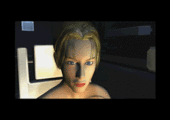
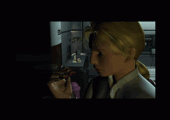
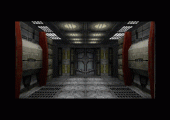
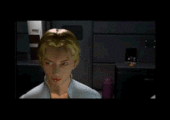
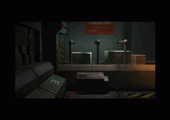
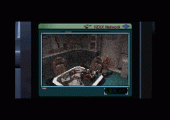
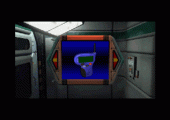
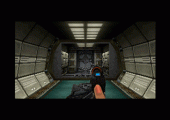

Recent Comments